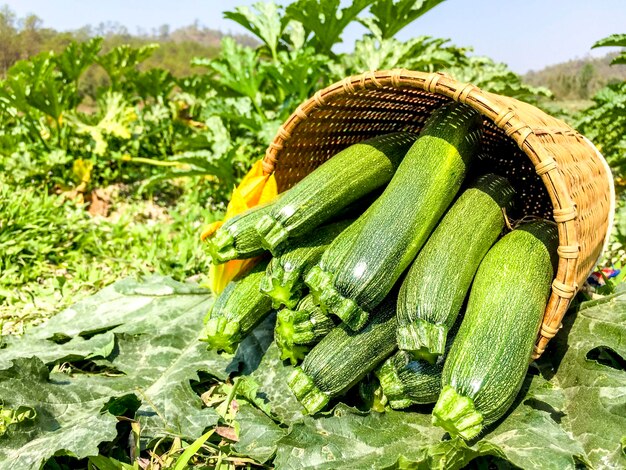Zucchini, also known as courgette, is a versatile and nutritious vegetable that thrives in South Africa’s diverse climate. Whether grown commercially or in home gardens, maximizing the quality and yield of zucchini is essential for ensuring a successful harvest and meeting market demands. By employing effective cultivation techniques and best practices, farmers and gardeners can enhance the quality and productivity of zucchini crops. Here are several techniques for achieving optimal results when growing zucchini in South Africa:
1. Selecting the Right Variety:
Choosing the appropriate zucchini variety is crucial for achieving optimal yield and quality. Consider factors such as climate, soil type, and disease resistance when selecting zucchini seeds. Varieties suited to South Africa’s climate, such as Black Beauty, Gold Rush, or Ambassador, are well-adapted to local growing conditions and can produce high-quality yields.
2. Soil Preparation and Fertilization:
Proper soil preparation is essential for promoting healthy root development and robust growth in zucchini plants. Ensure the soil is well-drained, loose, and rich in organic matter. Incorporate compost or well-rotted manure into the soil before planting to provide essential nutrients and improve soil structure. Additionally, supplement with a balanced fertilizer high in nitrogen, phosphorus, and potassium to support plant growth and fruit development.
3. Planting and Spacing:
Plant zucchini seeds or seedlings in fertile, well-drained soil once the danger of frost has passed. Space plants approximately 60-90 centimeters apart in rows spaced 90-120 centimeters apart to allow for adequate airflow and sunlight penetration. Planting zucchini in raised beds or mounds can also improve drainage and soil warmth, promoting healthier plants and higher yields.
4. Proper Irrigation:
Zucchini plants require consistent moisture throughout the growing season to thrive and produce quality fruit. Provide regular irrigation, ensuring the soil remains evenly moist but not waterlogged. Avoid overhead watering, as wet foliage can increase the risk of fungal diseases. Drip irrigation or soaker hoses are effective methods for delivering water directly to the roots while minimizing water waste.
5. Mulching:
Applying a layer of organic mulch, such as straw, grass clippings, or shredded leaves, around zucchini plants can help conserve soil moisture, suppress weeds, and regulate soil temperature. Mulching also helps prevent soil compaction and erosion, promoting healthier root development and improved nutrient uptake in zucchini plants.
6. Pest and Disease Management:
Regular monitoring and proactive pest and disease management are essential for protecting zucchini plants and preserving yield and quality. Keep an eye out for common pests such as aphids, squash bugs, and cucumber beetles, and promptly address any infestations using organic or chemical control methods as needed. Practice crop rotation and remove any diseased or damaged plants to prevent the spread of diseases such as powdery mildew or bacterial wilt.
7. Pruning and Training:
Pruning zucchini plants by removing excess foliage and lateral shoots can help improve airflow and sunlight penetration, reducing the risk of disease and promoting better fruit development. Additionally, training zucchini vines to grow vertically on trellises or supports can maximize space and sunlight exposure, resulting in higher yields and healthier plants.
8. Harvesting at the Right Time:
Harvest zucchini fruit when they reach the desired size and color, typically 15-20 centimeters in length and dark green in color for most varieties. Use a sharp knife or pruning shears to cut the fruit from the vine, taking care not to damage the plant. Regular harvesting encourages continued fruit production and prevents zucchini from becoming oversized and bitter.
9. Post-Harvest Handling:
Handle harvested zucchini with care to minimize damage and prolong shelf life. Store zucchini in a cool, dry place away from direct sunlight and humidity. Avoid washing zucchini until ready to use, as excess moisture can promote decay. Properly stored zucchini can remain fresh for up to one week.
10. Continuous Monitoring and Improvement:
Regularly monitor zucchini plants for signs of nutrient deficiencies, pest infestations, or disease outbreaks, and take corrective action promptly. Keep detailed records of planting dates, varieties, yields, and any observed issues to identify trends and make informed decisions for future growing seasons. Continuously seek out new techniques, technologies, and best practices to optimize zucchini production and quality.
In conclusion, by implementing these techniques for enhancing quality and yield, farmers and gardeners in South Africa can cultivate successful zucchini crops that meet market demands and contribute to a sustainable food supply. With careful planning, proper management, and a commitment to continuous improvement, growing high-quality zucchini can be both rewarding and profitable.
Join 'Farmers Mag' WhatsApp Channel
Get the latest Farming news and tips delivered straight to your WhatsApp
CLICK HERE TO JOIN






